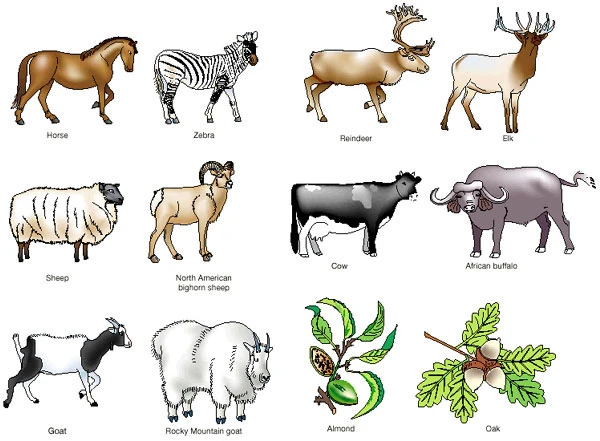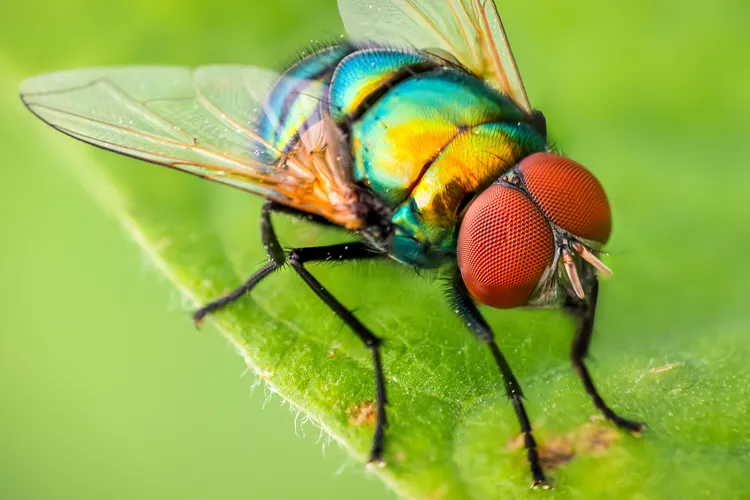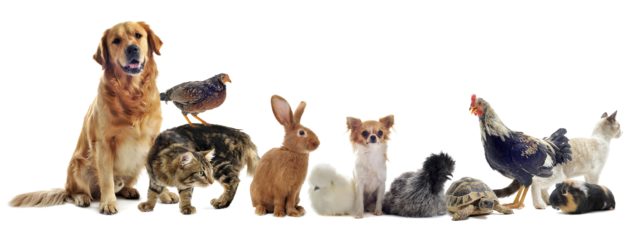We provide a list of used animal names in English to help you enhance your understanding of animals and insight into English idiomatic expressions.
What is your English level?
Find out your A1 A2 B1 B2 C1 C2 level of English with our quick, free online test.
Are you a night person with some spare time to expand your vocabulary? Are you striving to prepare yourself for a journey to an English-speaking destination and want to be well-prepared? Or perhaps you’re a zealous learner, eager to absorb as much English as possible?
With a vast array of over a million species, grasping the names of animals can be daunting, even in your native language, not to mention in English. Regardless of whether you take pride in your accomplishments in your English learning journey, find joy in your progress, or are enthusiastic about learning more, acquiring knowledge of animal names in English can be a valuable step to enrich your vocabulary and articulate yourself more effectively.
Fortunately, Preply has got your back. We provide a list of the most commonly used animal names in English to help you expand your understanding of animals and gain a better grasp of English idioms. If you wish to accomplish two goals at once, read on!
Mammals
Mammals are creatures with warm blood that typically deliver their offspring. The phrase “domesticated animals” pertains to pets and livestock, while “wild animals” encompasses those located in natural habitats or within zoos.
Domesticated mammals
Cow:The term “cash cow” is derived from the high milk production of cows and is used to describe a lucrative source of income.
Dog: The phrase “It’s a dog-eat-dog world” conveys the idea that life can be harsh and competitive.
Hamster: Hamsters are popular pets for children living in homes without backyards, as they can be kept in cages with sawdust.
Cat: Despite its antiquated nature, the expression “Cat got your tongue?” is still recognized as a way to remark on someone’s unusual silence.
Guinea pig: In the past, guinea pigs were used as test subjects in scientific experiments, though this is now acknowledged as inhumane. People still use the term “guinea pig” to describe someone undergoing a new or untested experience.
Rabbit: Rabbits are often associated with young children due to English storybooks like “The Velveteen Rabbit” by Margery Williams and the folklore character Brer Rabbit.
Horse: Although horses are primarily seen as working animals, their joyful trot and jumping abilities have contributed to the English phrase “horsing around,” which is another way of saying “fooling around” or “playing.”
Sheep: Sheep are often stereotyped as unthinking followers of the herd. Calling someone a “sheep” suggests that they lack independent thought.
Donkey:Despite being less common as livestock today, donkeys hold significant roles in popular culture, such as the character Eeyore in “Winnie the Pooh” or their presence in the Christmas story

Wild mammals
Mouse (plural: mice):The initial computer remote control was named a “mouse” due to its resemblance to the small white animal with a tail, similar to the cord of the device.
Monkey:The popularity of the cartoon “Curious George” may have contributed to monkeys’ reputation as playful and intelligent creatures. On occasion, children are affectionately called “little monkeys” when they exhibit high levels of energy.
Lion: As lions are emblematic of courage, you might refer to a very brave individual as “lion-hearted.”
Bear: Bears have been featured in popular culture for promoting honey (perhaps due to “Winnie the Pooh”) or emphasizing the importance of forest fire prevention (as seen with Smokey Bear). However, they can be genuinely hazardous to encounter in the wilderness.
Fox: Foxes are commonly associated with cleverness and wit. If you “outfox” someone, it means you’ve outsmarted them.
Beaver: Beavers are renowned for their tireless construction of natural dams using wood and sticks. If you’re an “eager beaver,” it signifies your readiness to work diligently on a task.
Moose: The well-known ice cream flavor “Moose Tracks” comprises vanilla with peanut butter chocolate cups and fudge, playfully resembling moose droppings in snow.
Tiger: Tigers are typically seen as aggressive and ruthless. The term “tiger mom” can be used to describe a mother who is overly competitive regarding her children.
Elephant: According to cultural folklore, elephants are known for their substantial size and long memories. “The elephant in the room” alludes to an impending and uncomfortable issue that everyone avoids discussing.
Zebra: The conventional response to the popular humorous riddle “What’s black and white and read [red] all over?” is “a newspaper.” Nevertheless, the joke has evolved to include answers like “a zebra with a sunburn.”
Rat: While some rats are domesticated as pets, others remain wild. Given that rats are regarded as intelligent but unclean animals, the term “rat” is used to describe a person who is sneaky. You might also “rat someone out,” signifying that you reveal one of their secrets.

Fish
While there is a theoretical count of more than 32,000 fish species, in the following list, we have included only the most prevalent names categorized by their aquatic habitats.
Freshwater fish
- Goldfish: Goldfish make for common introductory pets for children due to their straightforward maintenance. Additionally, in the United States, there’s a renowned cracker named after them.
Saltwater fish
- Tuna: While canned cooked tuna combined with mayonnaise has traditionally been a favored sandwich filling in the United States, raw tuna, such as in sushi and poke, has gained popularity in recent years.
- Shark: Given the reputation of sharks for their agility and cleverness, a “pool shark” is a sly term used to describe a highly skilled billiard player who deceives less experienced players into betting money.
Tropical fish
- Clown fish: Clownfish gained popularity due to their association with the main characters in the American children’s film “Finding Nemo.”
- Betta fish: While the term “betta fish” has its roots in Indonesia, derived from “bettah,” which means fighter, these fish are favored as pets for American children because of their compact size and vibrant colors.
Sea mammals
- Dolphin: Thanks to their perpetually curved teeth, dolphins are perceived as constantly wearing a smile, leading people to consider them as playful creatures.
- Whale: The Antarctic blue whale holds the title for being the largest creature on Earth. Therefore, when someone mentions they’re having “a whale of a time,” it implies they’re having an incredibly enjoyable and fun experience.
- Dolphin: Because of their curved teeth, dolphins are thought to be constantly smiling, which causes people to view them as playful animals.
Are you C1 Advanced English?
Get your C1 Advanced English certificate now!
✓ Add your certificate to your resume
⭐ ⭐ ⭐ ⭐ ⭐
Birds
English features numerous songs devoted to birds, like “Blackbird” by The Beatles and “Like a Bird” by Nelly Furtado. Describing someone as “free as a bird” signifies that they are blissfully unrestricted and capable of doing as they wish.
-
Chicken: A recent report indicates that chicken is the most consumed meat in the United States, with an average of 98.8 pounds of chicken consumed per person per year. Describing someone as “no spring chicken” implies that they have surpassed the more challenging phases of life and have gained experience.
-
Turkey: If you quit something “cold turkey,” it means you abruptly stop it without any gradual transition.
-
Duck: The term “to duck” comes from the way ducks lower their heads when they dive into the water, and it signifies dropping your head below an obstacle. When you aim to “get your ducks in a row,” it indicates your desire to become well-prepared by handling tasks in advance.
-
Parrot: Parrots are colorful birds known for repeating what they hear. “Parroting” someone implies imitating or echoing their words.
-
Pigeon: Pigeons are often seen bobbing their heads on the street. Being “pigeon-toed” means your feet point slightly inward.
-
Sparrow: Sparrows are small brown birds that frequently appear in biblical parables.
-
Robin: Robins are red or rust-colored birds. Since the 1970s, a popular American franchise named Red Robin has been serving items like fries and hamburgers.
-
Hummingbird: These birds are named after the humming sound their wings produce when they fly.
-
Blue jay: Blue jays are bright-blue birds native to North America, and Toronto’s baseball team is named after them.
-
Woodpecker: Woodpeckers are so named because they use their beaks to create nests in tree trunks.
-
Goose (plural: geese): Referring to someone as “a silly goose” suggests they’ve done something innocently foolish or thoughtless.
-
Eagle: The official U.S. shield features an eagle holding two olive branches. “Eagle-eyed” describes someone with exceptionally keen vision.
-
Owl: If you’re a “night owl,” you enjoy staying up late.

Reptiles
Reptiles are animals that breathe air and have scaly skin. In English, using the term “reptilian” to describe a person suggests that the person is strongly disliked or repugnant.
- Snake: Snakes are often associated with evil, cunning, or charm, possibly due to their biblical connections. The slang expression “snaking someone” refers to engaging in harmful or malicious actions toward a person in a sneaky manner.
- Lizard: Although some people confuse Godzilla with a lizard, the gigantic monster is actually a fictional dinosaur.
- Alligator: A popular parting phrase among English-speaking children is “See you later, alligator!”
- Crocodile: The response to “See you later, alligator” is “In a while, crocodile!”
Amphibians
Amphibians are small creatures that require water to survive since they breathe through their skin. Below, we provide the names of some of these animals in English.
- Toad: Frequently mistaken for the smooth-skinned frog, the toad possesses rough skin and tends to crawl instead of hopping.
- Frog: “Frog and Toad” is a well-loved American children’s book by Arnold Lobe, which was subsequently adapted into a popular children’s musical.
- Newt: Newts are aquatic creatures and are also referenced by J.K. Rowling in the “Harry Potter” series as a form of wizard testing.
- Salamander: Salamanders are among the few animals capable of regenerating their limbs after losing them.
- Turtle: Just as turtles withdraw into their shells when threatened, someone who “goes into their shell” is likely very shy or apprehensive around people.
- Tortoise: Often confused with turtles, which prefer the sea, tortoises are primarily land-dwelling creatures.

Insects
The most recognizable insect names in English are those commonly found in English-speaking countries like the United States, the United Kingdom, Canada, Australia, and New Zealand.
- Ant: Ants are widely known for their hard work and industry, a reputation that was further popularized by the children’s movie “A Bug’s Life” from the 2000s.
- Bee: Given that bees are always active and busy, someone who is constantly engaged in work or tasks is often referred to as a “busy bee.”
- Butterfly: Butterflies are associated with grace and beauty, and the famous American boxer Muhammad Ali is frequently quoted for his motto “Fly like a butterfly, sting like a bee.”
- Beetle: Beetles are insects with hard shells, distinct from The Beatles, a renowned band from the 1960s.
- Cockroach: American cockroaches are notably larger than German cockroaches and can be quite challenging to eliminate.
- Mosquito: Mosquitoes are arguably the most widespread and universally vexing insects on the planet.

Arachnids
Arachnids are creatures characterized by having eight legs. The term “arachnid” is derived from a Greek myth featuring a weaver, Arachne, who was transformed into a spider by the angered Athena.
- Spider: “The Itsy Bitsy Spider” is a widely recognized nursery rhyme for children that tells the story of a spider determined to climb a rain pipe despite inclement weather.
- Scorpion: Scorpions, typically found in deserts, are renowned for their sizable and venomous stingers. “The House of the Scorpion” by Nancy Farmer is a popular young adult science fiction novel.
- Tick: Ticks are small insects that can carry diseases, while their homonym “tic” refers to an involuntary facial spasm.
- Mite: To avoid confusion with “might,” which signifies strength, mites are minuscule insects. If someone mentions feeling “a mite queasy,” it means they are just slightly nauseated.
Conclusion
In summary, mastering animal names in English is not only beneficial for expanding your vocabulary but also for comprehending idiomatic expressions and common sayings in English. Familiarizing yourself with the names of animals in English will enhance your experience while traveling abroad, enable you to appreciate a broader range of media, and even assist you in addressing pest-related issues in a foreign country.
If the multitude of species seems overwhelming, you might want to consider enrolling in an English class with a Preply tutor. They can help you determine which animal names in English are most relevant to your requirements. Once you’ve become proficient in English animal names, you can progress to other important lessons, such as medical terminology, floral nomenclature, or terminology relevant to specific activities like climbing.
What is your English level?
Find out your A1 A2 B1 B2 C1 C2 level of English with our quick, free online test.





